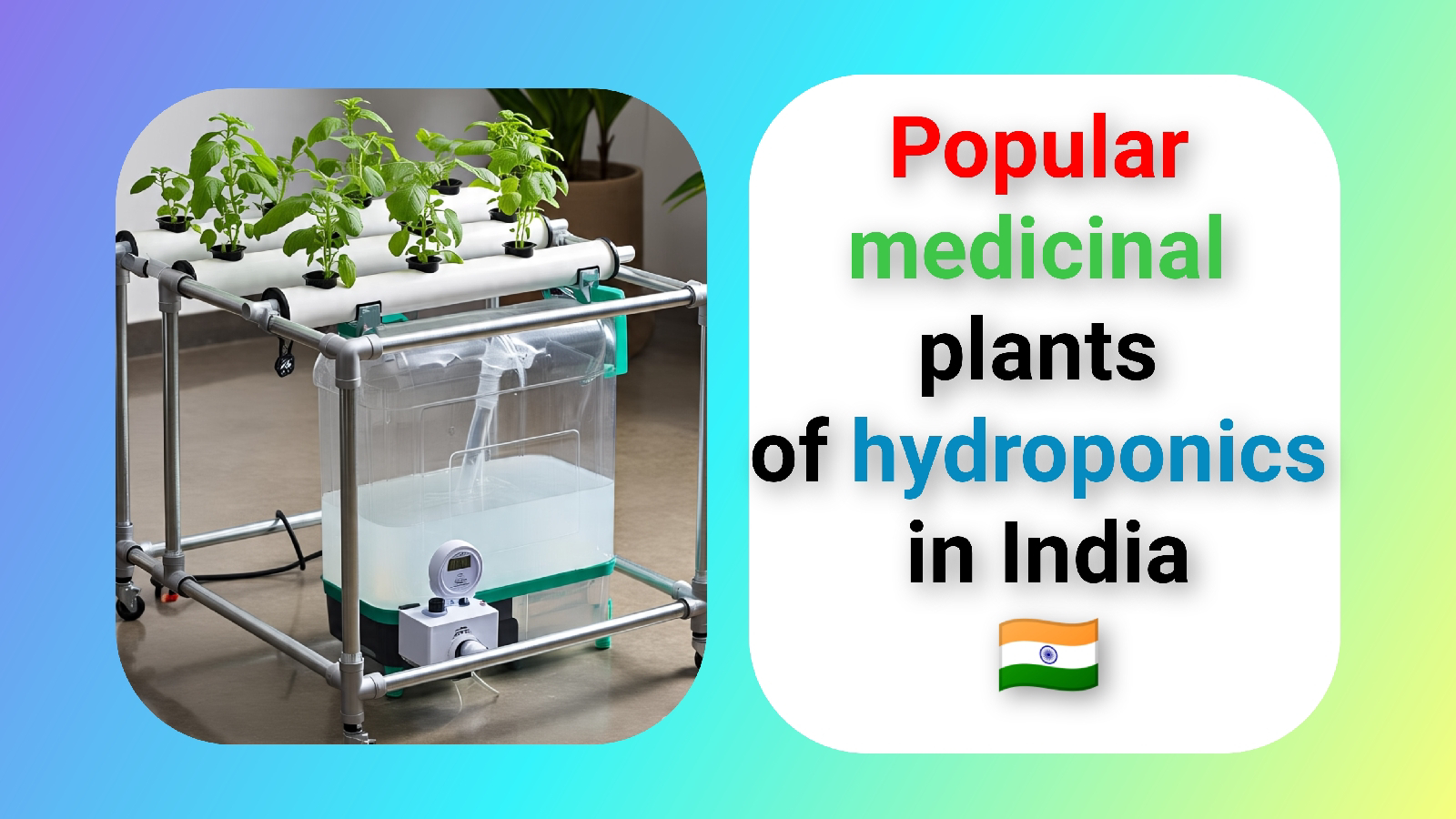Popular medicinal plants of hydroponics in India
| Hydroponics—soilless cultivation of plants using mineral nutrient solutions in water—has become increasingly popular in India, including for medicinal plants. Here’s a list of some popular medicinal plants grown hydroponically in India and why they’re valued: |
🌱 Popular Medicinal Plants for Hydroponics in India
| Medicinal Plant | Key Uses | Notes |
|---|---|---|
| Tulsi (Ocimum sanctum) | Immunity booster, respiratory ailments, stress relief | One of the easiest to grow hydroponically. |
| Aloe Vera (Aloe barbadensis) | Skin care, digestive health, wound healing | Thrives in hydroponic systems with good drainage. |
| Ashwagandha (Withania somnifera) | Stress relief, energy, sleep aid | Needs a well-managed hydroponic system due to root-based growth. |
| Mint (Mentha spp.) | Digestive health, cooling agent, culinary uses | Fast-growing and highly profitable hydroponically. |
| Brahmi (Bacopa monnieri) | Memory, cognitive support, stress relief | Prefers nutrient-rich water and consistent lighting. |
| Lemongrass (Cymbopogon citratus) | Digestive health, anxiety relief, antimicrobial | High oil content; grows well in hydroponics. |
| Stevia (Stevia rebaudiana) | Natural sweetener, diabetes management | Adaptable to hydroponics; needs moderate light. |
| Giloy (Tinospora cordifolia) | Immunity booster, anti-inflammatory | Vining habit requires trellis support in hydroponics. |
| Coriander (Coriandrum sativum) | Digestive aid, culinary uses, anti-inflammatory | Fast growth and high demand. |
| Turmeric (Curcuma longa) | Anti-inflammatory, antioxidant, digestive health | More challenging in hydroponics but possible with specialized systems. |
✅ Advantages of Growing Medicinal Plants Hydroponically
-
Pesticide-free cultivation.
-
Faster growth and higher yields.
-
Consistent quality and potency of medicinal compounds.
-
Controlled environment—ideal for delicate or high-value herbs.
💡 Tips for Growing Medicinal Plants Hydroponically
-
Choose nutrient solutions tailored to the specific plant.
-
Maintain proper pH (5.5-6.5) and EC levels.
-
Provide adequate light—some plants need 12-16 hours/day.
-
Monitor root health to prevent diseases.
-
Use support structures for climbing or vining plants (e.g., Giloy).
🌿💧✨




Comments
Post a Comment